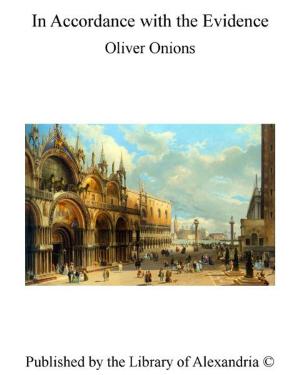A True Hero: A Story of the Days of William Penn
Nonfiction, Religion & Spirituality, New Age, History, Fiction & Literature| Author: | William Henry Giles Kingston | ISBN: | 9781465596307 |
| Publisher: | Library of Alexandria | Publication: | March 8, 2015 |
| Imprint: | Language: | English |
| Author: | William Henry Giles Kingston |
| ISBN: | 9781465596307 |
| Publisher: | Library of Alexandria |
| Publication: | March 8, 2015 |
| Imprint: | |
| Language: | English |
The Protectorate had come to an end ten years before the period when our story commences; and Charles the Second, restored to the throne of England, had since been employed in outraging all the right feelings of the people over whom he was called to reign, and in lowering the English name, which had been so gloriously raised by the wisdom of Cromwell. The body of that sagacious ruler of a mighty nation had been dragged out of its tomb among the kings in Westminster, and hanged on the gallows-tree at Tyburn; the senseless deed instigated by the petty revenge of his contemptible successor. The mouldering remains of Blake, also, one of the noblest among England’s naval heroes, had been taken from its honoured resting-place, and cast into an unknown grave in Saint Margaret’s churchyard. Episcopacy had been restored by those who hoped thus to pave the way for the re-introduction of Romanism, with its grinding tyranny and abject superstitions. The “Conventicle Act,” prohibiting more than five persons, exclusive of the family, to meet together for religious worship according to any other than the national ritual, had been passed, and was rigidly enforced; the dominant party thus endeavouring to deprive the people of one of the most sacred rights of man,—that of worshipping God according to the dictates of conscience. England’s debauched king, secretly a Papist, had sold his country for gold to England’s hereditary foe, whose army he had engaged to come and crush the last remnants of national freedom, should his Protestant people dare to resist the monarch’s traitorous proceedings. The profligacy and irreligion of the court was widely imitated by all classes, till patriots, watching with gloomy forebodings the downward progress of their country, began to despair of her future fate. Such was the state of things when, on the morning of the 14th of August, 1670, several sedate, grave-looking persons were collected at the north end of Gracechurch Street, in the City of London. Others were coming up from all quarters towards the spot. As the first arrived, they stood gazing towards the door of a building, before which were drawn up a body of bearded, rough soldiers, with buff coats, halberds in hand, and iron caps on their heads. Several of the persons collected, in spite of the armed men at the door, advanced as if about to enter the building.
The Protectorate had come to an end ten years before the period when our story commences; and Charles the Second, restored to the throne of England, had since been employed in outraging all the right feelings of the people over whom he was called to reign, and in lowering the English name, which had been so gloriously raised by the wisdom of Cromwell. The body of that sagacious ruler of a mighty nation had been dragged out of its tomb among the kings in Westminster, and hanged on the gallows-tree at Tyburn; the senseless deed instigated by the petty revenge of his contemptible successor. The mouldering remains of Blake, also, one of the noblest among England’s naval heroes, had been taken from its honoured resting-place, and cast into an unknown grave in Saint Margaret’s churchyard. Episcopacy had been restored by those who hoped thus to pave the way for the re-introduction of Romanism, with its grinding tyranny and abject superstitions. The “Conventicle Act,” prohibiting more than five persons, exclusive of the family, to meet together for religious worship according to any other than the national ritual, had been passed, and was rigidly enforced; the dominant party thus endeavouring to deprive the people of one of the most sacred rights of man,—that of worshipping God according to the dictates of conscience. England’s debauched king, secretly a Papist, had sold his country for gold to England’s hereditary foe, whose army he had engaged to come and crush the last remnants of national freedom, should his Protestant people dare to resist the monarch’s traitorous proceedings. The profligacy and irreligion of the court was widely imitated by all classes, till patriots, watching with gloomy forebodings the downward progress of their country, began to despair of her future fate. Such was the state of things when, on the morning of the 14th of August, 1670, several sedate, grave-looking persons were collected at the north end of Gracechurch Street, in the City of London. Others were coming up from all quarters towards the spot. As the first arrived, they stood gazing towards the door of a building, before which were drawn up a body of bearded, rough soldiers, with buff coats, halberds in hand, and iron caps on their heads. Several of the persons collected, in spite of the armed men at the door, advanced as if about to enter the building.















